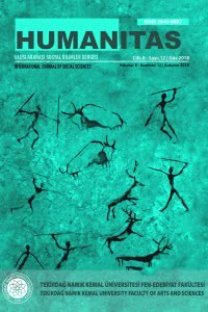BEAUTY AS FAIRY TALE IN FAY WELDON’S NOVEL THE LIFE AND LOVE OF A SHE-DEVIL
The contemporary fiction reveals a great interest in therepresentation of fairy tale motifs and structures. Fay Weldon’s novel,The Life and Loves of a She-Devil, attempts topresent the power ofresurgence of fairy tale by depicting and revising several of fairy talemotifs and structures. This article focuses on the motif of beauty, as it isone of the central paradigms of most fairy tales, and emphasises thatbeauty continues to be one of the most stringent preoccupations ofindividuals living in the contemporary culture of appearances. Not only infairy tales but in today’s world as well the oppressive beauty norms andthe struggle to achieve perfection become a problematical concern formost women.By employing many popular fairy tale motifs like jealousy,desire and craving of the stepsisters (in Cinderella), stepmothers (in SnowWhite and Rapunzel), rivals (in Little Mermaid), antagonists (likeMaleficent in Sleeping Beauty), the novelist tries to question virtueimplied in beauty. This study shows that Fay Weldon’s novel depicts thedominant ideology of beauty which is inserted in the fairy tales, questionsthe excessive interest in beauty and female body in the mainstreamculture, divulges the artificiality of such preoccupations,illustrates theabusive and deluding nature and presents their damaging impact uponindividual’s identity.
Anahtar Kelimeler:
Beauty, Culture of Appearances, Body Shame, Fairy Tale, Revision
BEAUTY AS FAIRY TALE IN FAY WELDON’S NOVEL THE LIFE AND LOVE OF A SHE-DEVIL
The contemporary fiction reveals a great interest in the representation of fairy tale motifs and structures. Fay Weldon’s novel, The Life and Loves of a She-Devil, attempts to present the power of resurgence of fairy tale by depicting and revising several of fairy tale motifs and structures. This article focuses on the motif of beauty, as it is one of the central paradigms of most fairy tales, and emphasises that beauty continues to be one of the most stringent preoccupations of individuals living in the contemporary culture of appearances. Not only in fairy tales but in today’s world as well the oppressive beauty norms and the struggle to achieve perfection become a problematical concern for most women. By employing many popular fairy tale motifs like jealousy, desire and craving of the stepsisters (in Cinderella), stepmothers (in Snow White and Rapunzel), rivals (in Little Mermaid), antagonists (like Maleficent in Sleeping Beauty), the novelist tries to question virtue implied in beauty. This study shows that Fay Weldon’s novel depicts the dominant ideology of beauty which is inserted in the fairy tales, questions the excessive interest in beauty and female body in the mainstream culture, divulges the artificiality of such preoccupations, illustrates the abusive and deluding nature and presents their damaging impact upon individual’s identity.
Keywords:
Beauty, culture of appearances, body shame, fairy tale, revision,
___
- Bartky, S.(1990).Femininity and Domination: Studies in the Phenomenology of Oppression. New York: Routledgo.
- Bettelheim, B. (2010). The Uses of Enchantment The Meaning and Importance of Fairy Tales.USA: Vintage Books.
- Bolen, J. S.(1989). Gods in Everyman: A new Psychology of Men’s Lives and Loves. San Francisco:Harper and Row.
- Bordo, S. (2003).Unbearable Weight: Feminism, Western Culture, and the Body.USA: University of California Press.
- Campbell, J. (1988). The Power of Myth.New York: Doubleday.
- Lieberman, M. R. (December 1972). Some Day My Prince Will Come: Female Acculturation through the Fairy Tale. College English, 34(3), 383 -395.
- McKinstry, S. J.(1994).Fay Weldon’s Life and Loves of a She-Devil: The Speaking Body”, Regina Barreca(Ed.).Fay Weldon’s Wicked Fictions (pp. 104-113). USA: University Press of New England.
- Orbach, S.(2006).Fat is a Feminist Issue. Great Britain: Cox& Wyman Reading.
- Parsons, L. T. (June 2004). Ella Evolving: Cinderella Stories and the Construction of Gender Appropriate Behaviour. Children’sLiterature in Education, 35(2), 135-154.
- Pentney, B. (2009). A comic turn, turned serious: Humour, Body, Motification, and the Natural in Fay Weldon’s The Life and Loves of a She-Devil. Gaby Pailer, Andreas Böhn, Stefan Horlacher, and Ulrich Scheck, Editions Rodopi B.V (Ed.)Gender and Laughter Comic Affirmation and Subversion in Traditional and Modern Media(pp. 81-92). New York: Amsterdam.
- Weldon, F. (1983).The Life and Loves of a She-Devil.USA: Pantheon Books.
- Wolf, N.(1991). The Beauty Myth How Images of Beauty are Used Against Women. London: Vintage Books.
- Zipes, J.(2006). Fairy Tales and the Art of Subversion.Great Britain: Routledge.
- Zipes, J. (2012). Don’t Bet on the Prince Contemporary Feminist Tales in North America and England. New York: Routledge.
- ISSN: 2147-088X
- Yayın Aralığı: Yılda 2 Sayı
- Başlangıç: 2013
- Yayıncı: Namık Kemal Üniversitesi
Sayıdaki Diğer Makaleler
ORTA DOĞU JEOPOLİTİĞİ VE KÜRESEL GÜÇLERİN ENERJİ MÜCADELESİ
Yunus ALYAZ, Ali Osman ÖZTÜRK, Zübeyde Sinem GENÇ
Yukarı Menderes Havzası Tarihöncesi Bilgilerine Katkı Sağlayan Yeni Bir Yerleşim: Göceler Höyük
FONGOGO: A CASE STUDY ON THE USABILITY OF THE LOCAL CROWDFUNDING AND FUNDRAISING WEBSITES IN TURKEY
STRUCTURALIST PARADIGM AND MUSIC
HIERAPOLIS TERITORYUMUNDA YENİ BİR YERLEŞİM ALANI: AKÇAPINAR NEKROPOLÜ VE BULUNTULARI
TÜRK ÜNİVERSİTE ÖĞRENCİLERİNİN EMOJİ ALGISI
BEAUTY AS FAIRY TALE IN FAY WELDON’S NOVEL THE LIFE AND LOVE OF A SHE-DEVIL
